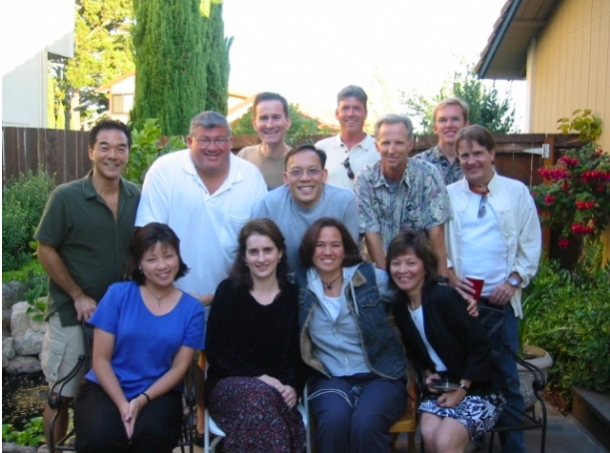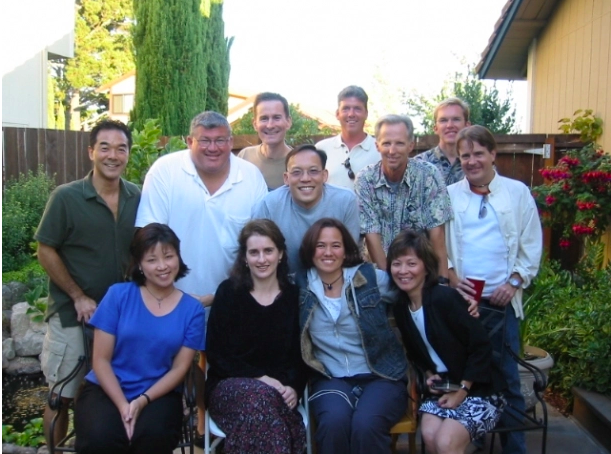Ichi-go Ichi-e
Thu, Nov 5, 2020-
Tags
This article is a reprint of a contribution piece originally published in the Waseda USA Newsletter Vol. 13 (Winter 2018).
The path to Japan I gingerly stepped onto 35 years ago as a first-time vacation experience to my ancestral homeland has since become a well-traveled two-way thoroughfare between the U.S. and Japan. I credit this life journey to my remarkable study-abroad year at Waseda University International Division (Kokusaibu) in 1984-1985 through my home campus, Cal State University, Los Angeles. Teaching English on the side and starting my professional career in foreign-exchange added another sensational chapter to my life in Tokyo after I completed Kokusaibu in May 1985.
Nearly two years later, I returned to my native Los Angeles and began my committed personal and cultural ties with both countries. I am a Yonsei (fourth generation) Japanese American who had a very typical American upbringing with just a dab of Japanese culture for the sake of both sets of grandparents and, characteristically, didn’t have any Japanese language background.
Looking in the rearview mirror I am not surprised how my Kokusaibu experience has played a significantly influential role in my education, work, and life. After that vacation to Japan and my graduation from the University of Southern California in 1983 my single goal in my life a year later was to enter Waseda’s International Division and learn Japanese proficiently enough in order to start my professional career in finance and live in Tokyo for many years. A visit to Kokusaibu to see USC classmates on that vacation was the catalyst.
The 1980s was “Japan, Inc.”, the “Ron and Yas” political friendship, and the bubble economy. I recall the dollar-yen exchange rates while at Waseda was about ¥250—great if you are converting dollars to yen, but when I came home the opposite was true selling my yen for fewer dollars received. After Kokusaibu, I continued my language studies at a private school for a while, but found my salary-man job in Ōtemachi left no free time for school. However, I was primarily speaking Japanese with my colleagues and Japanese friends who were my CSU classmates’ homestay siblings and also regular Waseda students who were in my tennis circle and calligraphy club.
My CSU group was and still is a tight class: four CSU-Waseda reunions including our beloved Takako Kazaoka’s, CSU advisor at Waseda, attendance in L.A. in 2009 (25th anniversary), and the last one was in April 2014 (30th anniversary) in Tokyo. And just like the beginning Takako showed nine former classmates the building that housed the former Kokusaibu and the Common Room. Major déjà vu and flashbacks to our youth and innocence in Japan! I’ve also been on the planning committees for the Waseda Kokusaibu-SILS Alumni Reunions in 2015 (40 attendees) and 2016 (nearly 80 attendees including Takako) in Los Angeles’ Little Tokyo historic district. I, Wing, Cathy, Ken, LuAnn, Sharon, and Eric (who still lives in Tokyo) get together when someone comes to L.A. When in Tokyo I visit my homestay mother, Ryoko, and her son, Ikuma and his family, both of whom are in Setagaya-ku. I lived at their beautiful home in Shibuya-ku, Sarugaku-cho back then.
I work for Japan’s largest financial institution MUFG Union Bank, N.A. and earlier in my career with two now-defunct Japanese banks. I have leadership positions with the Montebello-Ashiya Sister City Association, Little Tokyo Historical Society, and the Japanese American National Museum. Through my community involvement, I had the great pleasure to meet Emperor Akihito and Empress Michiko, two prime ministers of Japan, and other Japanese government officials. I will embark on yet another church mission work trip to Japan towards the end of this year to again do a study tour of the Sendai coastal region where the deadly earthquake and tsunami struck on 3/11.
The mostly-inward looking Japan of the 80s and of few foreigners is so different today with Japan now being a major global tourist destination and Tokyo to host the 2020 Summer Olympics. Ever-popular Japanese foods, culture, films, music, and business to name just a few industries have seamlessly integrated into societies worldwide today.
My visits to Japan later in life are much more meaningful and I’m more appreciative of my Japanese heritage especially when I stay with my distant relatives in furusato (hometown) Tottori-ken, Wakayama-ken, and Fukushima-ken that always includes o-haka mairi (go to ancestral grave) each visit. What I learn and encounter in Japan every time I’m there I try to integrate into my daily life in the States. Waseda Kokusaibu was where it all began: Ichi-go ichi-e 一期一会 (to treasure meetings with people, cherish any gathering you take part in).

Mr. Michael Okumura (very left)
Michael Okumura
Waseda International Division (1984-1985)














